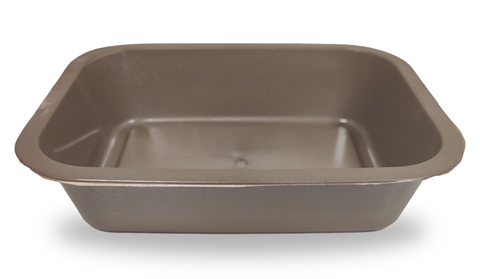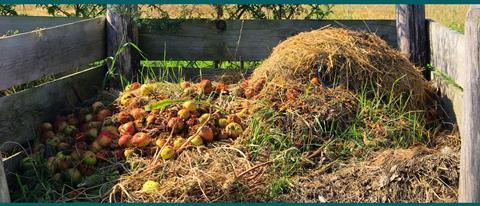
In our latest Wider View article, Miriam Gallur, PhD and Pilar Albaladejo of the ITENE Research Centre discuss the benefits of utilizing agricultural and food industry by-products for compostable packaging.
The generation of agro-food residues and by-products constitutes a significant global problem, as its management has a huge impact on the environment, economy, and society.
According to the FAO (Food and Agriculture Organization of the United Nations), food and crop waste contribute to economic losses of around $936 billion and account for 8% of all global greenhouse gas (GHG) emissions (FAO, 2020) on a global scale. In Europe, approximately 90 million tons of food and 700 million tons of crops are wasted each year.
The management and treatment of organic waste or bio-waste is a major challenge worldwide both for the companies that generate it - mainly the agri-food sector - as well as for managers and other actors in the value chain. This is because, according to data published by Eurostat, 226 million tons of waste were produced in Europe in 2020 alone, which were landfilled (23%), incinerated (27%) or subjected to recycling (30%) and composting (18%) processes. In this sense, Europe has set common objectives in waste management policy due to the environmental and economic problems that can be generated by poor waste management, as well as the loss of raw materials for the industries.
Packaging key directives
The current EU Directive on Packaging and Packaging Waste was first adopted in 1994 and has been revised several times since then. It establishes rules for EU Member States to ensure that packaging placed on the EU market meets certain requirements and to take measures to prevent and manage packaging waste. The specific objectives according to Directive (EU) 2018/852/CE on packaging and packaging waste establish that all plastic packaging must be recyclable by 2030 and it calls for a reduction of packaging waste of 15% in 2030 compared to 2010.
The European Parliament reached a provisional political agreement on the revision of the proposal for the Regulation on Packaging and Packaging Waste this March 2024. The objective is to address the increase in packaging waste generated in the EU and, at the same time, harmonize the internal packaging market and promote the circular economy. The co-legislators agreed to exclude compostable plastic packaging and packaging whose plastic content is less than 5% of its total weight from these objectives. In addition, the new framework directive on waste, Directive 2018/851, establishes among its priorities the selective collection of organic waste before the end of 2023 in all member states and the implementation of new recycling targets, reaching 65% in 2035. Additionally, in relation to waste disposal, Directive 2018/850 establishes a limit to landfilling of 10% of the total waste by 2035. Furthermore, European Directive 2018/852 aims to make waste management more efficient throughout the European Union, treating waste as a resource and moving towards a European recycling society.

Moreover, agricultural residues have a high organic content with consequent high valorization potential but are either dumped in landfills (resulting in greenhouse gas emissions and unwanted anaerobic fermentations, leading to the risk of explosions and fires) or valorized in low-value applications, such as compost production or for animal feed.
Given the high volume of generated waste and packaging materials, the linear economic model of resource production and management poses a risk to the environment. There is a need to develop resource management and valorization measures, shifting from the concept of a linear economy (extract, produce, waste) to the more sustainable concept of circular economy (reduce, reuse, recycle).
The Circular Economy aims to concurrently minimize the generation of waste and to enhance its economic utilization and valorization, transforming discarded materials into high-value products.
For these reasons, an increasing number of companies are looking to find a new purpose for their by-products to transform these waste materials into high-value-added products through environmentally friendly, sustainable, and efficient processes.
Unintended consequences
On the other hand, polymeric materials are increasingly taking on a greater role in our daily lives, since they are used in a wide variety of applications, from packaging to automobiles, construction, etc. This is because they have attractive properties, among which lightness, ease of transformation, low cost, and versatility stand out, as they have a wide range of physical and chemical properties depending on their composition. As a consequence, global plastic production has increased considerably, reaching 400.3 million tons in 2022, six million tons more than the previous year. Packaging remains the largest market segment for plastics, accounting for 40% of the total plastics market in 2023, ahead of the automotive and construction sectors. This situation has sparked great interest in the packaging industry in the development of materials obtained from sustainable sources that are in line with new legislation and the Circular Economy and, for the first time, the growth of biobased polymers outperforms conventional polymers, as reflected in a study carried out by Renewable Carbon Publications. The worldwide production of bioplastics continues to increase, with an expected growth of over 184% in the coming years, according to the European Bioplastic association. According to the latest market data collected by European Bioplastics in cooperation with the Nova-Institute, the global production capacity of bioplastics is expected to increase from 2.21 million tons in 2023 to approximately 7.43 million tons in 2028. However, the capacity is still far from that of petroleum-derived polymers, which reaches 370 million tons, so it is necessary to optimize the production capacities and applications of the use of this type of material.

What are the options for valorizing these residues?
ITENE Research Centre is committed to technologies capable of transforming these wastes into intermediate, final materials and high value-added products for a wide range of industrial sectors. Along these lines, ITENE is working on the development of second-generation biorefineries, which are industrial facilities or structures that integrate processes for the complete conversion of waste into multiple bioproducts.
Upcycling products obtained from these biorefineries have been used to develop sustainable additives and materials for the packaging sector. ITENE has obtained building blocks, inorganic additives, cellulose nano and micro additives, natural pigments to develop 100% biobased inks, as well as natural biopolymers, 100% biobased bioplastic materials and bio-composites.
In this context, ITENE participates in several projects to develop new technologies for the valorization of organic waste, transforming it into high-value products for different sectors, such as the AGROMMATTER project.
AGROMATTER project: how to demonstrate to industry that recovery processes for the production of new packaging materials are not so far away?
The AGROMATTER project is focused on the extraction of compounds of interest from agri-food ‘waste using sustainable technologies for the packaging, biotechnology, textile, cosmetics, automotive and food industries, among others; AGROMATTER allows companies to align themselves with the Directive (EU) 2018/852/CE on packaging and packaging waste on the Waste and Contaminated Soils laws, which aims to promote a circular economy and low carbon generation in Spain, to meet the new objectives established in the community directives in line with the Spanish Circular Economy Strategy (Circular Spain 2030).

The AGROMATTER project is a network of excellence granted by the CDTI (Centre for Industrial Technological Development), through the Ministry of Science and Innovation, within the framework of aid intended for Technological Centres of Excellence ‘Cervera’, CER-20211013, comprised of five highly complementary Technological Centres in the agricultural, biotechnological, and materials science fields. AGROMATTER has the objective of establishing a network of Technological Centres of scientific-technical Excellence in the field of the Circular Economy applied to the valorization of waste and the development of biobased materials for technical applications. Within the framework of this project, ITENE will focus its current and future technological capabilities on the study of waste and by-product recovery for the development of new materials with low environmental impact, with a perfectly defined life cycle for the target applications in the packaging sector.
To obtain and develop biopolymers of renewable origin from waste, AGROMATTER will focus on carrying out the poly (lactic acid) polymerization process from lactic acid coming from agro-industrial wastes such as broccoli or lemon peel. In this regard, efforts have been made to adjust process conditions with the aim of obtaining polymers with properties comparable to those obtained from conventional raw materials, making it possible to produce final packaging from renewable sources and waste.

Lactic acid will be developed through advanced fermentation processes. Fermentation processes are those that enable the controlled conversion of simple molecules into chemical compounds through microbial populations. Most fermentation processes have been oriented towards the generation of high-added-value chemical products, such as alcohols and organic acids, highly demanded by the industry due to the potential they present, particularly in the materials development industry, as raw materials for the production of polymers. In this line, biopolymers are being synthesized from building blocks such as lactic acid or succinic acid, as well as directly by microorganisms, such as polyhydroxyalkanoates (PHA). Therefore, ITENE, through the AGROMATTER project, is optimizing and increasing yields and scaling processes so that waste recovery at an industrial level is a near reality. The results confirmed the potential of selected agri-food by-products to replace the use of commercial sugar sources for obtaining high-value-added organic acids. These pilot studies enable technical-economic studies to evaluate the industrial viability of these valorization processes.
PLA is one of the most widely used biopolymers and one of the most promising in terms of properties for the packaging materials sector. It is a thermoplastic material that can be processed using the same technologies as conventional polymers. Additionally, its transparency makes it a highly interesting material for the packaging sector, as one of the requirements for consumers in most food products is to be able to see the appearance of the product inside the packaging. For this reason, within the AGROMATTER project, ITENE has committed to the development of ad hoc formulations for the improvement of the final material properties (mechanical, barrier, processability, etc.).

The packaging industry is demanding formulations appropriate to the application and the properties required in their use, such as resistance and stability, incorporating into the formulations, for example, compounds such as stabilizers, process assistants, or reinforcements, among others, since plastics have a series of deficiencies that limit their use in certain applications, becoming more accentuated in plastics of renewable origin, which must overcome the barrier of using conventional materials. On the other hand, compostable solutions are needed, and the use of organic additives to improve the compostability time of the materials is another alternative tested in the AGROMATTER project.
AGROMATTER proposes obtaining cellulosic nanoadditives from the extraction and purification of cellulose from different waste or by-products, using environmentally friendly, scalable, industrializable, and competitive processes. The improvement of the properties of grades of plastic materials of renewable origin is a need demanded by the raw material sector, converters, and end users, and the use of these nanoadditives will allow the development of new polymeric grades with the required properties. ITENE, in the AGROMATTER project, has covered these developments by identifying the target properties to improve and optimizing the processes for obtaining biopolymers reinforced with lignocellulosic nanoadditives, through the design of spindles, with the aim of correctly dispersing the additives in the polymeric matrices and reaching the new grades with improvements in thermal, mechanical, and barrier properties.
Finally, work has been done on the technologies for manufacturing final containers, taking into account that biobased and biodegradable polymers are more sensitive to high processing temperatures than conventional polymers, making it a reality to obtain final containers of renewable origin through different technologies such as injection, extrusion-blowing, etc.
What is the next step?
The development of these technologies promotes collaboration and involvement from all stakeholders within the value chain, who must drive research and innovation while facilitating the knowledge transfer to businesses and the subsequent implementation of new technologies. Moreover, the implementation of these processes in the industry would imply a reduction in costs associated with the management and disposal of biowaste, as well as a decrease in the production costs of biopolymers. Furthermore, the development of scalable and sustainable industrial processes for compounds and biopolymers of interest, as an alternative to petroleum-derived materials, will foster the creation of new value chains, enabling connections with various industrial sectors. In this way, the AGROMATTER project will continue contributing to the transition to a circular economy and the reduction of the environmental impact of industrial activities and putting into the market new sustainable packaging materials with improved properties and improved biodegradability and compostability rates.















No comments yet